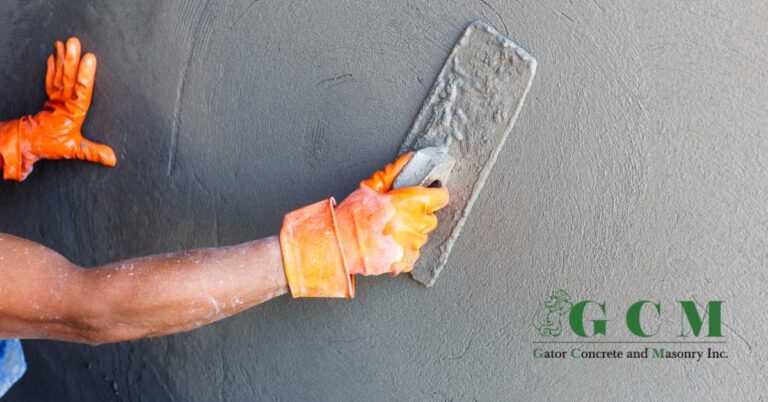Even though concrete is an integral part of modern infrastructure, it has its equal share of pros and cons. Although concrete is strong and can be used in many ways, concrete buildings can crack over time due to various factors, such as shrinkage, changes in temperature, and loads from external forces. These cracks can make the building less stable, requiring expensive repairs and upkeep.
However, self-healing concrete is a new construction idea that could change the game. In this article, let us look at the definition of self-healing concrete and the benefits you should take advantage of.
Defining Self-Healing Concrete
In a nutshell, self-healing concrete can heal itself, so the cracks do not need to be found and fixed as often. Otherwise, cracks can cause the steel reinforcements to rust and the concrete to break down, leading to many safety issues. This cuts costs while making things last longer.
With self-healing concrete, there is no need to worry about many concrete parts cracking. There are instances where cracks that do not show up, can be fixed, or heal themselves are good. This is especially true when there is steel reinforcement, which is common in many large-scale structures. Unplanned cracks in your concrete building may make it more likely that the support will rust, which will cause the concrete to break down.
How Does Self-Healing Concrete Work?
Self-healing concrete has superabsorbent polymers (SAP) or hydrogels, which can hold up to 500 times the weight of water without breaking down. When cracks appear, SAP is let into the air and swells, partially filling in the crack. Once the SAP particles have swollen, they break down and release the fluid into the surrounding matrix, where it can cure, become more hydrated, and CaCO3 crystallize. In this way, cracks may close all the way.
Self-healing concrete makes it easier to find and fix cracks and is also one way to lower the risk of rusting.
How to Understand Self-Healing Concrete
Self-healing concrete is a new and innovative material that can fix cracks, making concrete buildings last longer and more durable in the long run. The idea behind self-healing concrete comes from nature, especially the way that living things heal wounds. In order to make the built environment more resilient and long-lasting, researchers have come up with different ways to give concrete the ability to fix itself. In this section, let us discuss how cracks in self-healing concrete can be fixed:
Autogenous Healing
Autogenous Healing happens when cement particles that are not yet fully hydrated in the concrete mix with water to make calcium silicate hydrate (C-S-H) gel. This gel fills in the cracks and strengthens the material, essentially healing itself. For this process to work, water must be in the concrete structure. However, many new studies are still being done to improve the ability of concrete to heal itself.
Microbial Healing
In recent years, many experts have been looking into microorganisms in the concrete mix to help the body heal. When cracks appear, these microorganisms come to life and make calcite, a mineral that fills and covers the cracks. Microbial Healing is a biological way for things to fix themselves, and lab tests have shown that it works well.
Container-Based Healing
Another method is to put packages containing healing substances like polymers or healing chemicals into the concrete mix and mix them in. When cracks spread, the pills break open, letting the healing substances into the cracks. The agents then react with the materials around them to form a link that fills the cracks.
The Pros of Using Self-Healing Concrete
Concrete that can fix itself after cracking is called “self-healing concrete.” This is a new type of concrete that might make buildings last longer.
Increased Durability and Extended Lifespan
As mentioned in the earlier sections, self-healing concrete can make buildings last much longer by keeping small cracks from getting bigger and causing problems with the structure. This means less regular repairs and maintenance are needed because of the material, which saves money and resources over time.
Self-healing concrete makes concrete buildings last longer and is more resilient, allowing them to better handle freeze-thaw cycles, chemical exposure, and mechanical loading.
Enhanced Structural Integrity
Self-healing concrete makes projects safer by keeping the structural integrity of buildings, bridges, and other structures longer. Whenever water gets in, the material helps seal the cracks, preventing them from getting in and stopping the reinforcing bars inside the concrete from rusting.
Lower Carbon Emissions
Self-healing concrete reduces the number of fixes and replacements, leading to less material use and lower carbon emissions, which are both excellent for the environment. It allows you to use less new concrete, which means using fewer raw materials and having less of an effect on the world.
Longer Service Life
Because it fixes cracks as they happen, self-healing concrete can make concrete buildings last much longer, so they don’t need to be fixed or replaced as often.
Self-healing concrete reduces the amount of work that needs to be done by hand, which saves money over a building’s life. This is especially beneficial for big infrastructure projects that can have high upkeep costs.
Sustainability
Self-healing concrete helps with sustainability by lowering the number of times that fixes and replacements need to be done. This saves resources and lessens the damage that making and maintaining concrete does to the environment.
Long-Term Savings
Even though it costs more upfront, the structure may save a lot of money in the long run because it will not need as much upkeep and repairs. The building becomes more valuable in the long run since it can last longer and be worth more when it is time to sell and costs less to run.
The Cons of Using Self-Healing Concrete
Now that we have discussed the pros of using self-healing concrete, let us dive into the cons.
High Initial Cost
The technology and materials needed for self-healing concrete are now more expensive than regular concrete. The higher costs may lead to higher building costs, especially at the start of the project.
Challenges in Implementation
Putting self-healing mechanisms in your concrete, like microcapsules, bacteria, or special additives, takes a lot of knowledge and accuracy when mixing and pouring. As a result, it is essential to work with a contractor with the proper knowledge and technical skills to use new technologies.
Variable Effectiveness Depending on Crack Size
Self-healing concrete can fix cracks, but you may still need to fix them by hand if it has bigger ones. It also depends on the condition of the environment, such as temperature or humidity in the surroundings, to work well.
Building Codes and Standards
Depending on the location, there may be regulatory and acceptance barriers. Current building codes and standards might not yet allow the use of self-healing concrete, which creates regulatory barriers. People may also not want to use new technology because they do not know how it works or are skeptical about how long it will last.
Compatibility with Existing Infrastructure
Adding self-healing features to old concrete buildings is complex from a technical and practical point of view. To make it easier for restoration projects to use self-healing concrete, problems with compatibility, structural concerns, and retrofitting costs need to be fixed.
How to Go Forward With Using Self-Healing Concrete
Self-healing concrete has a bright future, even though there are some problems. Researchers and developers are still working to fix the issues and improve the technology so that more people can use the less expensive material.
In this section, let us look at how you can take advantage of the potential of self-healing concrete in the future.
Integration with Smart Sensors
Using self-healing concrete with intelligent sensor technology can let you check on a structure’s health and performance in real time. Smart sensors can find cracks and instantly start the self-healing process, making self-healing concrete systems more responsive and effective.
Nanotechnology
Breakthroughs in nanotechnology could improve concrete’s ability to fix itself at the molecular level. Nanoparticles mixed into the concrete can help cracks heal quickly and make the material stronger and last longer.
Standards and Certification
Ensuring self-healing concrete is tested and certified in a standard way will make it easier for it to be accepted and used in building rules and industry practices. Researchers, engineers, and regulatory agencies must work together to ensure that self-healing concrete goods are safe, reliable, and work well.
Use in Sustainable Building
Self-healing concrete can help make buildings more environmentally friendly by reducing the damage that creating and maintaining concrete does to the environment. Using other eco-friendly building materials and tools together with these can make construction projects even more eco-friendly.
Key Takeaway
With the advancement of technologies and tools in construction, self-healing concrete is one that you should keep an eye on. Self-healing concrete is a practical way to fix the problems that come with concrete structures. Artificial intelligence and cutting-edge technology can work together to make self-healing concrete, which could change how we design, build, and manage infrastructure. While there are still a few challenges, many studies and new ideas are making it possible for concrete structures to be long-lasting, strong, and environmentally friendly in the future.

